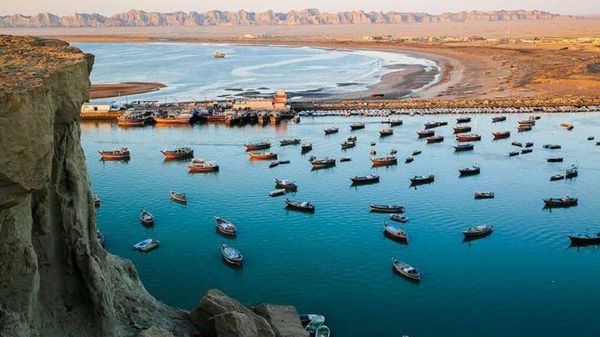Referring to the "Belt and Road" initiative and expressing a serious desire to integrate Iran into this initiative is one of the most important and strategic points emphasized during the President's visit to China and his speech at the Shanghai Summit, a plan that could thwart Israel's transit conspiracy in the region.
According to Ashura News, citing Fars News Agency, considering the government's development plans for the Makran region, it seems that apart from playing an active role in the East-West Corridor, the connection to the CPEC corridor as part of the Belt and Road Initiative also requires special attention in the two frameworks of transit linkage and creation of new value chains. Makran Region and Development Goals of the Islamic Republic of Iran The Makran region is one of the most strategic regions of Iran with direct access to open waters, which, despite enjoying numerous geoeconomic advantages, has so far faced the challenge of underdevelopment. In recent years, there has been frequent talk about the necessity of developing macro-economic activities in this region, and projects such as the development of Shahid Beheshti Port (Chabahar), the Chabahar-Zahedan railway connection, and the construction of the Makran Petrochemical Town have been launched. In general, the development of economic activities in the Makran region is one of the issues that has been the subject of consensus among policymakers and elites in the country in recent years and has been reflected in upstream documents in various ways. For example, the general policies for sea-oriented development, which were announced in December 1402, emphasize the need to pay special attention to the Makran coast in the comprehensive plan for sea-oriented development. Clause (4) of Article (48) of the Seventh Progress Plan Law mentions the development of Makran with the aim of becoming a center for international production, trade and tourism exchanges as one of the major national economic projects, and Clause (x) of Article (101) of this law lists the development of the Makran coast as one of the important pillars in enhancing the position of the Islamic Republic of Iran at the regional and international levels. China-Pakistan Economic Corridor
The CPEC megaproject encompasses a set of infrastructure projects and economic cooperation networks that, on the one hand, strengthen trade and economic connectivity between China and Pakistan, and on the other hand, provide China with a secure land route to access open waters without passing through the Strait of Malacca. The development goals of China and Pakistan are significantly intertwined within the framework of the various components of this project, including Gwadar Port, and China, despite existing security threats and restrictions, seems determined to advance this joint project. Connecting Makran to the CPEC Corridor: Transit and Value Chains The Makran region enjoys significant geographical proximity to the main components of this megaproject, which, along with the expanding relations between the three countries of Iran, Pakistan, and China, provides unique capacities for integrating Iran into the development megaproject. For example, the distance between the two strategic ports of Chabahar and Gwadar is only 90 kilometers, and the strategic port of Chabahar in Iran can easily be linked to this transit corridor via Gwadar. The issue of Iran’s participation in this economic corridor is not limited to transit. Unlike China and Pakistan, Iran has access to abundant energy resources and is considered a net energy exporter, and accordingly, it can undertake to supply the energy needs of China and Pakistan through this corridor.
More importantly, the continuation of this economic corridor can be considered in the form of creating new value chains and production with the participation of Iran. The final market for the products of this chain can be one of the three countries in question or international markets, the latter of which has good access through the Chabahar and Gwadar routes. China will be a suitable source for financing development projects in this regard, and petrochemical and mining value chains, food industries, fisheries, and agricultural and livestock products are examples of industries with advantages in this strategic connection. Defining joint cooperation with China in the Makran region and in line with development megaprojects such as CPEC can also become a solid element in the political bond between Iran, China, and Pakistan. In fact, establishing such ties will convince the Chinese and Pakistani sides that Iran did not extend a hand of friendship to them out of necessity and urgency, and Iran's strategic bond with these two countries will not change with favorable winds blowing from the West, given the intertwining of the development goals of the parties.


Post a comment